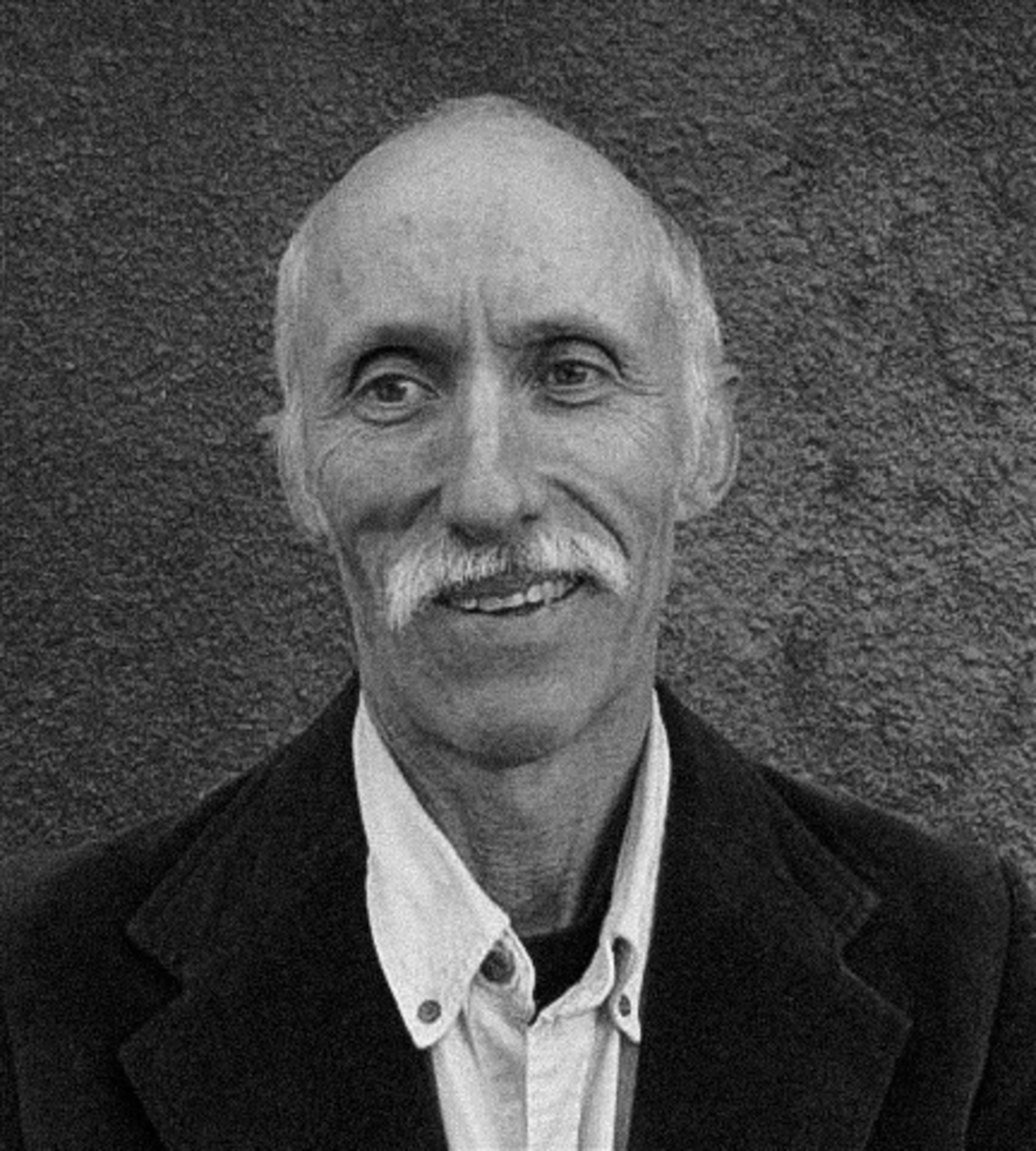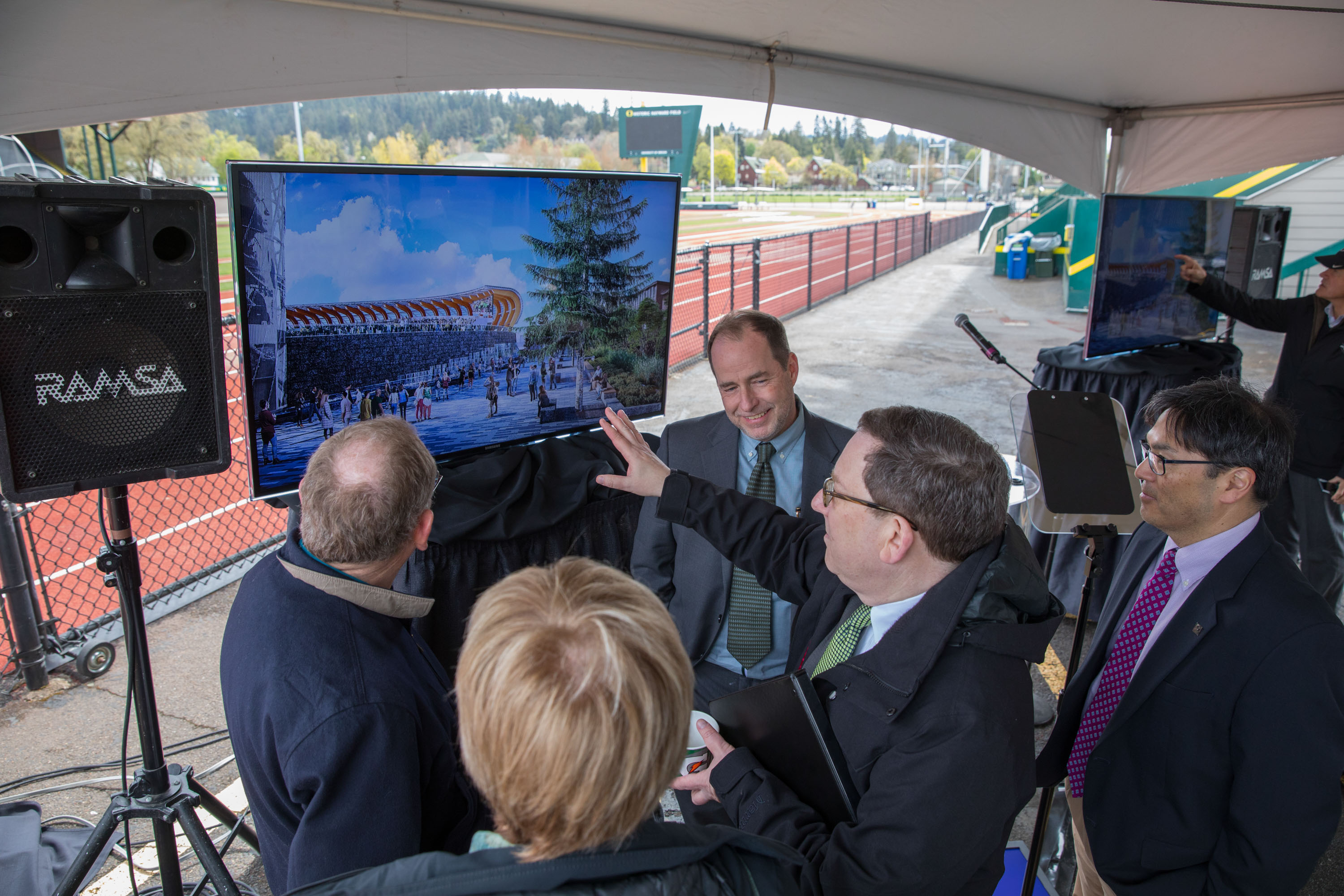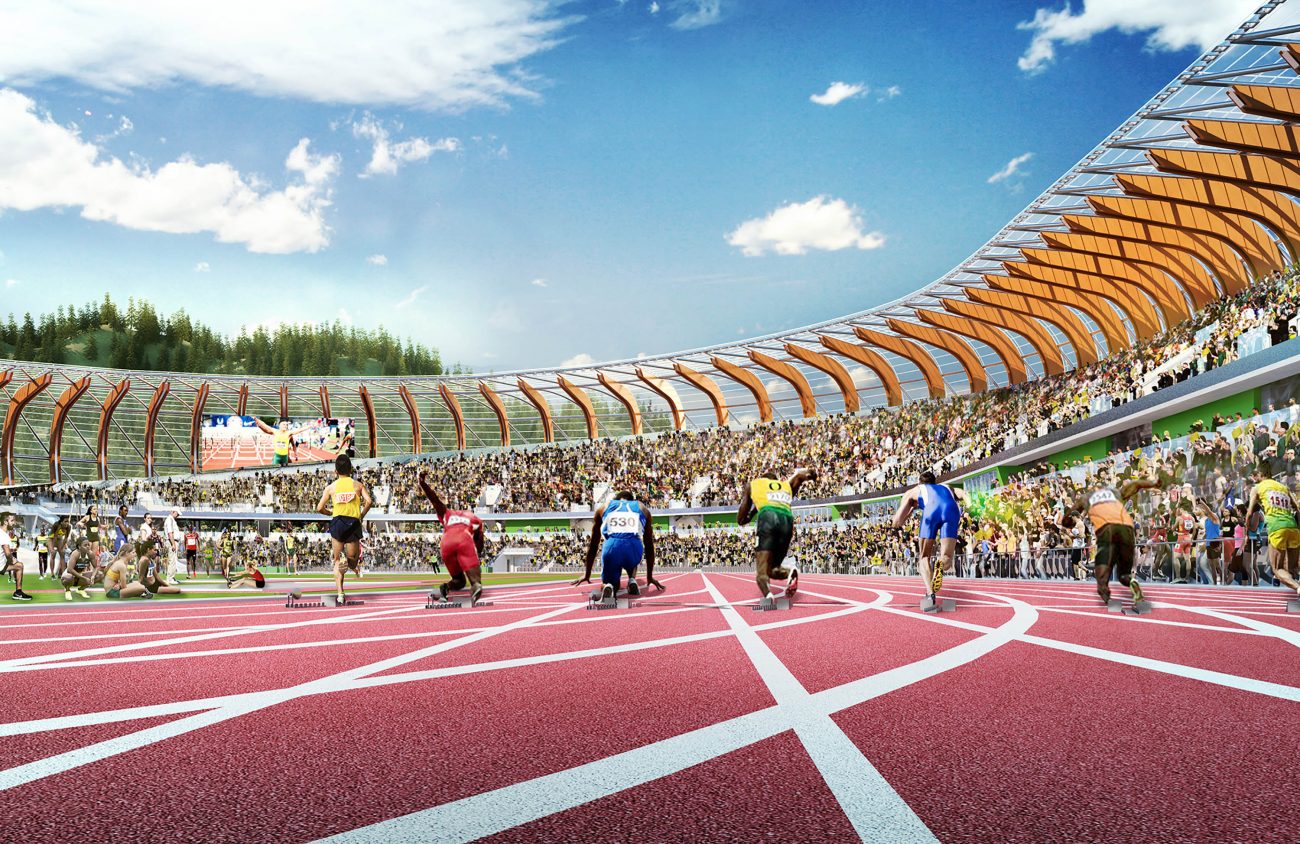Both those who want to retain the history and integrity of Hayward Field’s East Grandstand and those excited for the planned new stadium agree that the University of Oregon has not been as transparent with the public as hoped.
Regarding the plans to demolish Hayward Field and construct a new stadium, the issue of poor transparency has arisen among community members who question the UO’s statement that the current facility’s structure is failing and in need of demolition — though, apparently, it was deemed safe enough to hold events like the Oregon Twilight meet May 4 and the upcoming NCAA Championships June 6-9.
An engineering report from 2016 reveals that the East Grandstand is much more sound than has been reported.
The university’s Around the O website says the design team for the Hayward project initially wanted to preserve the East Grandstand, but decided against it due to “numerous factors — a failing structure, noncompliance with the Americans with Disabilities Act, tight seating, obstructed sightlines, and virtually no amenities.”
“My disappointment is with the seeming disingenuousness of the UO’s process,” says Tom Bowerman, the son of the late UO track coach and Nike co-founder Bill Bowerman and director of PolicyInteractive, a research team focused on issues like global climate change. “I kept hearing that the east stands were rotten and worthless, but they’ve not publicized an independent engineering building analysis done in 2016.”
Enlarge

Bowerman obtained that analysis via public records request and gave it to Eugene Weekly.
The report, completed on April 29, 2016, was prepared by Wiss Janney Elstner Associates (WJE), a structural and architectural engineering company, for SRG Partnership Inc., one of the contractors involved in the new stadium project.
This was around the time the UO was preparing for the original renovation of Hayward Field — an expansion, rather than a demolition, that retained the original East Grandstand.
WJE’s report lays out the state of the grandstand, starting with the bleachers, which it says have water staining that “generally appears to be superficial.”
Decay observed in the wood was “generally limited and localized,” WJE’s report says.
The report also details water leaking through the roof on the east end of the grandstand, causing staining “but no noticeable decay.”
“Generally, the wood framing for the grandstand seating structure is in good-to-fair condition with limited areas of decay and a small number of wood members with splitting or cracking,” the report concludes.
‘Yes, the building needs new siding and benches, small stuff by way of comparison to total demo and replacement.’ — Tom Bowerman
Bowerman says the findings are not “uncommon in a 100-year-old building with inadequate maintenance.” He has a specific knowledge of old buildings as he owns historic buildings in town and has a degree in architecture.
WJE’s report states its objective was to find short-term recommendations, which need to be addressed immediately for safety, and long-term recommendations, that could be included whenever the renovation is set to begin.
“Based on our visual observations, we determined that there are no conditions that need to be addressed in the short term,” the report says.
“This information was not offered in the current debate,” Bowerman says. “Yes, the building needs new siding and benches, small stuff by way of comparison to total demo and replacement.”
Frustration with the lack of transparency on the UO’s end also came out in the Eugene City Council’s work session on Wednesday, May 9.
In that session, the council decided against designating Hayward Field’s East Grandstand as a historic city landmark; they did, however, pass a motion to direct City Manager Jon Ruiz to work with the university to ensure more public input on what would happen with the grandstand’s salvaged materials after demolition and the new stadium’s impacts, such as noise, traffic and parking, to surrounding neighborhoods.
During the work session, Councilor Alan Zelenka, of the university ward, noted an “absence of any community engagement whatsoever on the part of the UO and in particular the UO athletic department.”
“When people didn’t have an opportunity to talk about it and have their input, they felt like they weren’t heard,” he said. “And what I’ve learned from the last 12 years of being a city councilor is when people don’t get an opportunity to be heard, they feel as though they’ve been disrespected.”
Enlarge

Courtesy University of Oregon
Zelenka said he and Mayor Lucy Vinis met with UO President Michael Schill and discussed the lack of public input around the project, which is what led to Schill making the promises to engage the public more.
A subject that has come up frequently is what the late UO track coach Bill Bowerman would have thought of the new stadium and the demolition of Hayward Field.
Even the UO’s website, Around the O, asks, “What would Bowerman do?” on its Hayward Field webpage.
The website continues: “While no one can know that for sure, it was a unanimous conclusion to look to the future and take a bold, innovative approach.”
Tom Bowerman says his father would have wanted a transparent process.
“The man I remember would have asked for honest evidence and good planning,” he says. “That is how he designed training schedules and shoes, an approach which served athletes and the university well.” ■
A Note From the Publisher

Dear Readers,
The last two years have been some of the hardest in Eugene Weekly’s 43 years. There were moments when keeping the paper alive felt uncertain. And yet, here we are — still publishing, still investigating, still showing up every week.
That’s because of you!
Not just because of financial support (though that matters enormously), but because of the emails, notes, conversations, encouragement and ideas you shared along the way. You reminded us why this paper exists and who it’s for.
Listening to readers has always been at the heart of Eugene Weekly. This year, that meant launching our popular weekly Activist Alert column, after many of you told us there was no single, reliable place to find information about rallies, meetings and ways to get involved. You asked. We responded.
We’ve also continued to deepen the coverage that sets Eugene Weekly apart, including our in-depth reporting on local real estate development through Bricks & Mortar — digging into what’s being built, who’s behind it and how those decisions shape our community.
And, of course, we’ve continued to bring you the stories and features many of you depend on: investigations and local government reporting, arts and culture coverage, sudoku and crossword puzzles, Savage Love, and our extensive community events calendar. We feature award-winning stories by University of Oregon student reporters getting real world journalism experience. All free. In print and online.
None of this happens by accident. It happens because readers step up and say: this matters.
As we head into a new year, please consider supporting Eugene Weekly if you’re able. Every dollar helps keep us digging, questioning, celebrating — and yes, occasionally annoying exactly the right people. We consider that a public service.
Thank you for standing with us!

Publisher
Eugene Weekly
P.S. If you’d like to talk about supporting EW, I’d love to hear from you!
jody@eugeneweekly.com
(541) 484-0519
